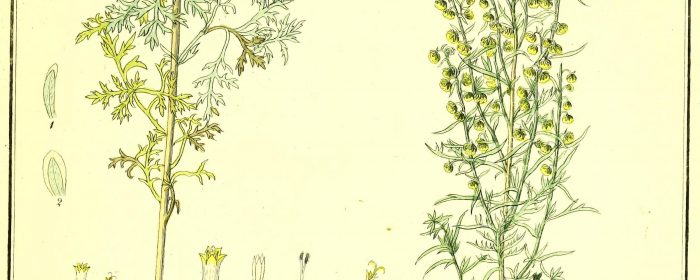
Artemisia pontica, the Roman Wormwood or Small Absinthe, is a lesser known cousin of Grand Wormwood and the preferred herb used in the production of absinthe and vermouth. Originating in southeastern Europe (the specific name refers to the Pontus area on the shores of the Black Sea).
It is naturalised over much of Eurasia from France to Xinjiang, and is also found in the wild in northeastern North America.
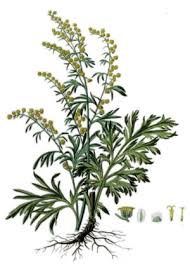
It is called Little or Small Absinthe because it is smaller in stature and leaf than the Grand Absinthe (Artemisia absinthium) also known as Grand Wormwood.
It grows as a rhizomatous perennial with erect stems up to 100 centimetres tall; the grey foliage is finely divided and aromatic. The flowers are small, yellowish, and appear in loose panicles at stem tips.
The essential oil from the plant contains cineol, camphor, thujone, and borneol among other components. It is said to be less bitter than great absinthe and is the principal flavouring of vermouth. It is commercially cultivated in Spain and Lithuania.
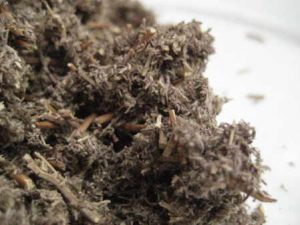
Usage for Wormwood:-
It is an ingredient in absinthe, which contrary to popular belief was never banned in the UK during la Belle Epoch although it was throughout the rest of Europe until the recipe changed. It is still used for flavouring in some other spirits and wines which include the bitters, vermouth and pelinkovac.
In the Middle Ages, it was used to spice mead, a honeyed wine, and in Morocco it is still used as tea which we heartily recommend as a digestive.
In 18th century England, wormwood was sometimes used instead of the better known hop in beer manufacturing.
A handful of Lavender, Wormwood and Rosemary stuffed in an old sock is an effective deterrant to moths in a wardrobe. Refresh by squeezing occasionally and wetting with some kind of spirit to release the essential oils.
Its traditional use has been claimed to remedy indigestion and gastric pain, and it acts as an antiseptic, and as a febrifuge.
Etymology
The word “wormwood” comes from Middle English “wormwode” or “wermode”. The form “wormwood” is influenced by the traditional use as a cure for intestinal worms. Webster’s Third New International Dictionary attributes the etymology to Old English “wermōd” (compare with German Wermut and the derived drink Vermouth). An alternate explanation dubiously combines the Old English “wer”, meaning “man” (as in “werewolf”), with OE “mōd”, meaning “mood”.
Buy Now
Roman Wormwood Herb (Cut) – Artemisia pontica

ORRIS ROOT ( Iris florentina )
Orris Root (#Iris germanica, Iris florentina, and Iris pattida) is a perennial plant with sword-shaped leaves and highly scented, pale blue flowers. The fleshy rootstock (rhizomes) grow just below and along the ground. The rhizomes are dug up in August and freed of the rootlets and brown outer bark, and then they are dried.
The whole dried Orris Root is incredibly hard and doesn’t always have a strong aroma until shaved or grated. Ours is quite aromatic.Rather than attempt to grind it yourself – It will ruin your grinder, if you are using Orris as a fixative in Pot Pourri you would be better off using the ready ground fine powder.
Also known as Iris, Flag Iris, Pale Iris, and Orris Butter
Orris Root is a #fixative used in potpourri for its colour and its scent, which is similar to Violets. Most commercial orris is produced in Italy where it grows wild.
Traditional Uses of Orris Root:-
Orris Root is a fixative used in potpourri and the oil from which it derives is used in perfume for its colour and its scent, which is similar to Violets. Most commercial orris is produced in Italy where it grows wild (which is where ours comes from, collected from the wild using sustainable 1:20 collection methods)
The root can be used as flavouring in sweets, and as a base for toothpastes and perfume where in particular it is used as a fixative. For use in perfume it must be “hung” for at least 5 years before it can be used.
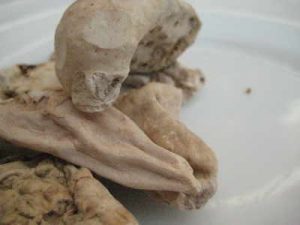
#Orris Root tea was once used to treat bronchitis, colds, coughs, diarrhoea, and dropsy. It is still used to strengthen gums and freshen breath. The Root has diuretic, emetic, and cathartic properties. It can also be used for colic and liver congestion.
History of Orris Root:-
In ancient Greece and Rome, Orris Root was largely used in perfumery, and Macedonia, Elis and Corinth were famous for their unguents of Iris.
Theophrastus and Dioscorides were well acquainted with Orris Root; Dioscorides and Pliny remark that the best comes from Illyricum (now modern Dalmatia). Probably I. Germanica is the Illyrian Iris of the ancients, as it is plentiful there and I. Florentina and I. pallida do not occur. The latter were probably introduced into Northern Italy in the early Middle Ages.
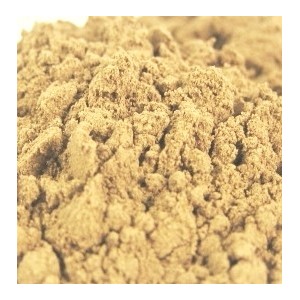
The ancient arms of #Florence – a white Lily or Iris on a red shield – seem to indicate that the city was famed for the growth of these plants.
A writer of the thirteenth century, Petrus de Crescentiro of Bologna, mentions the cultivation of the White, as well as of the Purple Iris, and states at what season the root should be collected for medicinal use.
In Hoodoo and in spiritual uses it is known as the “Love Drawing Herb” and “Queen Elizabeth Root” and is used to ensnare and guarantee the love of someone in return for the earnest love of the one casting the spell.
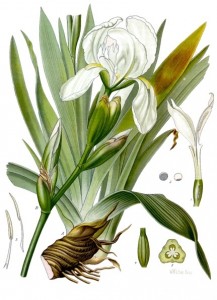
You can buy the following by clicking on the links:-
Orris Root Whole
Orris Root Powder
Orris Root Absolute Oil
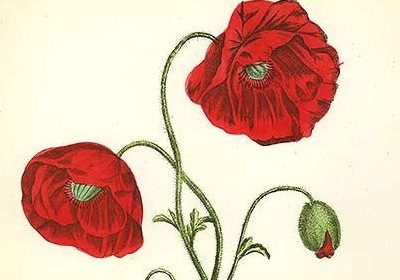
Papaver rhoeas from which Red Poppy Petals are obtained are also called the Common Poppy, Corn Poppy, Corn Rose, Field Poppy Flanders Poppy or just Red Poppy is an annual herbaceous species of flowering plant in the poppy family, Papaveraceae. This poppy is commonly thought ofas an agricultural weed (hence the common names including “corn” and “field”) but after World War I, The Great War, as a symbol of armistice and remembrance (but not in all countries)
Traditional Uses for Red Poppy Petals:-
The flowers of the corn poppy have a very long tradition of medicinal usage, especially for ailments in the elderly and young children.
They are mainly regarded (in syrup) as a mild pain reliever and as a treatment for irritable coughs but also help to reduce children’s nervous over-activity. Unlike the related opium poppy (Papaver somniferum) they are non-addictive. However, the plant does contain alkaloids, which are still under investigation, regarded as very very slightly narcotic and so should only be used under the supervision of a qualified herbalist.
The flowers and petals are anodyne, emollient, emmenagogue, expectorant, hypnotic, slightly narcotic and sedative.
An infusion is usually taken internally in the treatment of bronchial complaints and coughs, insomnia, poor digestion, nervous digestive disorders and minor painful conditions. The flowers are also used in the treatment of jaundice.
The petals are harvested as the flowers open and are dried for later use. They should be collected on a dry day and can be dried or more frequently made into a syrup. The latex in the seedpods is narcotic and slightly sedative. It can be used in very small quantities, and under expert supervision, as a sleep-inducing drug. The leaves and seeds are tonic. They are useful in the treatment of low fevers.
They are frequently used in Pot Pourri simply because they are pretty and keep their colour well when dried properly.
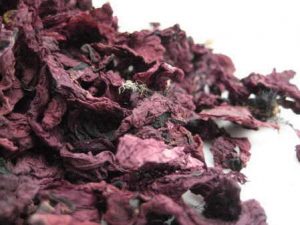
To Purchase Red Poppy Petals click here
Constituents:-
Papaver Rhoeas is very slightly narcotic. The chief constituent of the fresh petals is the red colouring matter, which consists of Rhoeadic and Papaveric acids. This colour is much darkened by alkalis.
All parts of the plant contain the crystalline non-poisonous alkaloid Rhoeadine. The amount of active ingredients is very small and rather uncertain in quantity. There is great controversy as to the presence of Morphine. Also it has not been determined whether Meconic Acid, which is present in opium, is a constituent.
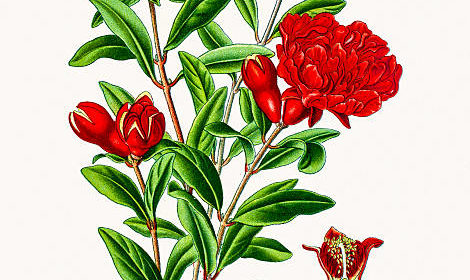
Pomegranate Flowers (Punica granatum) can have a beneficial effect for overall general health. The tree will bloom abundantly although little blossom will set fruit in cooler climes and blossom fall is common, however the flowers are generally sun dried and then the blossoms can used to make a herbal tea. A tea made from the flowers is generally believed to be beneficial for specific cardiac health, to reduce the symptoms of diabetes and good for general health.
The flowers have astringent effects and can be used to help prevent acne. A toner or face pack made using the flowers is excellent for skin health.
Spots on the skin can be treated using the extract obtained from pomegranate flowers (either in tincture or infused form)
An infusion made using the flowers helps to control diarrhoea and drinking the tea in small doses lessens the effect of diarrhoea
Dried pomegranate flower (when powdered) can be used in the preparation of a herbal tooth powder. The flowers can treat gingivitis and are good for overall oral health.
Used to help relieve the discomfort of migraines and minor headaches.
In other cultures it is known by a variety of names such as Granada or Granado, Dulim, Dadima, Granatapfel, Melegrano or Pomo Granato.
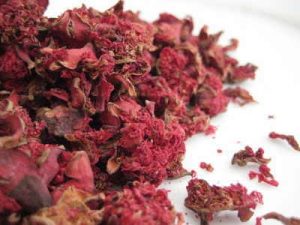
History and Mythology of Pomegranate:-
The tree is native of the Middle East stretching to the Himalayas in northern India and has been cultivated since ancient times throughout the Mediterranean region of Asia, Africa and Europe.
The fruit was used in many ways as it is today and was featured in Egyptian mythology and art and was prized in the ancient world.
It was known to central and southern India where it was brought from the Middle East about the first century A.D. and was reportedly growing in Indonesia in 1416. It has been widely cultivated throughout India and drier parts of southeast Asia, Malaysia, the East Indies and tropical Africa since. The most important growing regions today are Egypt, China, Afghanistan, Pakistan, Bangladesh, Iran, Iraq, India, Burma and Saudi Arabia. There are some commercial orchards in Israel on the coastal plain and in the Jordan Valley.
It is rather commonly planted and has become naturalized in Bermuda where it was first recorded in 1621, but only occasionally seen in the Bahamas, West Indies and warm areas of South and Central America. Many people grow it at cool altitudes in the interior of Honduras. In Mexico it is frequently planted, and it is sometimes found in gardens in Hawaii. The tree was introduced to California by Spanish settlers in 1769. It is grown for its fruit mostly in the dry zones of that state and Arizona. In California, commercial pomegranate cultivation is concentrated in Tulare, Fresno and Kern counties, with small farms in Imperial and Riverside counties.
Images of the fruit are used to represent fertility, which seems to have its origins everywhere. We see it in the Middle East and India. The fruit was cultivated in Egypt before the time of Moses. It was found in the Indus valley so early that there is a word in Sanskrit for pomegranate. Indian royalty began their banquets with pomegranate, grape, and jujube. Arab caravans probably spread its use.
The pomegranate is significant in Jewish custom. Tradition holds that a pomegranate has 613 seeds to represent the 613 commandments in the Torah. The design of the pomegranate was woven into the high priest’s robes, and brass representations were part of the Temple’s pillars. It is mentioned six times in the Song of Solomon. We see it again in ancient Greece and Rome. In the verses of the Odyssey, Homer mentions it as part of the gardens of Alcinous (probably in Sicily). The Romans imported their pomegranates from African Libya, and Pliny the Elder gave instructions for its storage. It appears in China during the Han and Sung dynasties.
The derivation of the word pomegranate comes from the Middle French pome garnete (seeded apple), but Europeans were slow to adopt the pomegranate. It was probably introduced from Sicily, however Europeans, then under Norman influence, distrusted fruits and vegetables, preferring a meat-based diet. It is mentioned in the 14th century Ménagier de Paris which offered some recipes, and it was known in England in Elizabethan times being mentioned in Shakespeare’s Romeo and Juliet. The enthusiasm for pomegranate as a food was limited, but it was widely used as a decoration.
The Spanish Conquistadores brought the pomegranate to America. Jesuit missionaries carried it north to their missions in California. They were found growing wild in Georgia in 1772 .
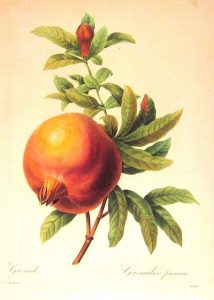
Pomegranate Flowers – Punica granatum
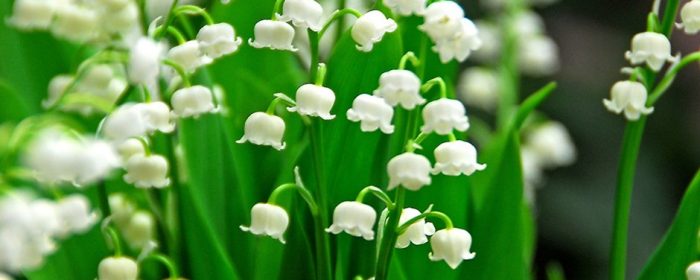
Lily of the Valley (Convallaria majalis) is a deliciously and sweetly scented but highly toxic woodland (therefore partial shade loving) flowering plant. It is a native throughout the cool and temperate Northern Hemiphere in Asia, and Europe. all plant parts are toxic including the red berries that it sometimes forms after flowering
It is also know as May lily, May bells, and Muguet (in French) and in Christian folklore, as Our Lady’s tears or Mary’s tears
Lily of the Valley Leaves Uses:-
It is primarily used to treat the heart. It is a cardiovascular herbal remedy which has been known and used for centuries. It is also a diuretic.
Lily of the Valley as a Cardiovascular Aid:
It can help to cause the heart beat to slow down and become more regular. Because it is a diuretic, lily of the valley also helps the blood pressure to decrease as fluid leaves the body. The action of the drug closely resembles that of Digitalis, though it is less powerful; it is used as a substitute and strongly recommended in valvular heart disease, also in cases of cardiac debility and dropsy. It slows the disturbed action of a weak, irritable heart, whilst at the same time increasing its power. It is the leaves which are used in herbal remedies and they have been found to be a perfectly safe remedy containg less toxins than the flowers. No harm has been known to occur from taking it in full and frequent doses, it being preferable in this respect to Digitalis, which is apt to accumulate in the blood with poisonous results.
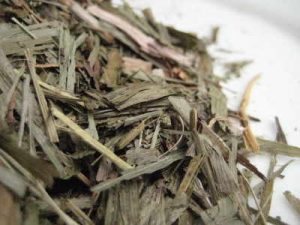
Lily of the Valley as a Diuretic:
Lily of the valley can cause increased urine production and aid the kidneys.
Folklore:-
At the beginning of the 20th century, it became tradition in France to sell the plant on international Labour Day which is May the 1st and also called La Fête du Muguet (Lily of the Valley Day) by labour organisations and private persons without paying sales tax (on that day only) as a symbol of spring.
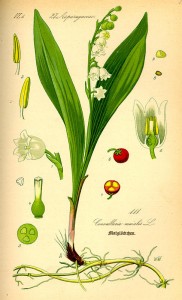
Lily of the Valley Cut Herb – Convallaria majalis
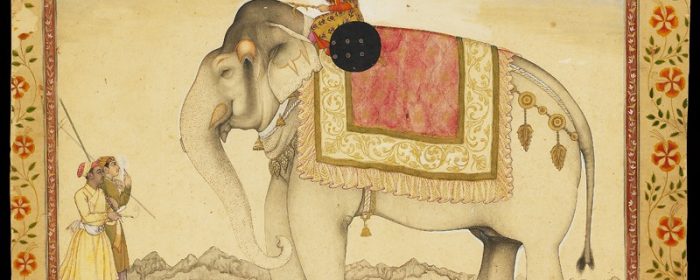
The word Attar is derived from the Hindu/Urdu word Ittar which in turn derives from the similar Persian word for Perfume, Itar, and is an essential oil derived from botanical sources usually blended with a wood oil like, but not always, Sandalwood.
Most commonly these oils are extracted via hydro or steam distillation. They can also be expressed by chemical means but generally natural perfumes which qualify as Attars are distilled with water.
The term is mostly used in the Middle East and India nowadays instead of the term essential oils but historically an Attar was very different.
Attar oils were once generally distilled into a wood based oil such as sandalwood and then aged. By and large they still are.They are extremely strong in aromatic terms and a little (just a drop) can be overpowering. Their use is popular in the middle and far east particularly as they are alcohol free but they should be used sparingly and with circumspection.
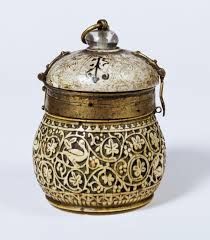
The aging process could last from one to ten years depending on the botanicals used and the results desired. Technically Attars are distillates of flowers, herbs, spices and other natural materials. As they age they thicken and become strong.
Their expense is down to the use of Sandalwood or other expensive or endangered wood oils let alone the additional distilled ingredients like oud which is the most expensive wood in the world or Rose which takes at least 9000 petals to make just 1ml of oil.
The ancient Egyptians were famous for producing perfumes or Attars throughout the ancient world and they are still renowned in the field today. The perfumes were extracted from plants and flowers by a process that we, today, would call “enfleurage” before they could be added to other oils. The process was later refined by the famous Muslim physician Shaykh al-Rais who made a distinctive type of distilled aromatic product. He was referred to as Abi Ali al Sina. Some say that he was the first to make a distillation of Rose. Liquid perfumes were previously just a mixture of oil with crushed herbs and aromatics until his distillation process where he is said to have first experimented with roses.
The most famous Attars of his day were Rose, Saffron, Jasmine, Oud and at the time were greatly favoured by the Islamic world to treat numerous health disorders largely. They are still popular today along with a variety of musks but are more highly regarded for their aromatics qualities than their medicinal attributes.
Some of the first users of Attars were the Mughal invaders of India from Persia. Jasmine Attar was the favourite perfume of the Nizams of the Hyderabad state. Traditionally in the Eastern world, it was a customary practice for the nobility to offer an Attar to their guests at the time of their departure. The Attars are traditionally given in ornate tiny crystal cut bottles called Itardans. This tradition of giving a scent to one’s guests continues to this day in many parts of the Eastern world. Among Sufi worshipers the use of Ittars during meditation circles and dances is quite common.
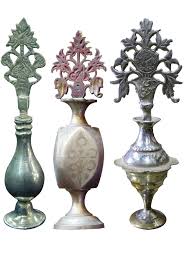
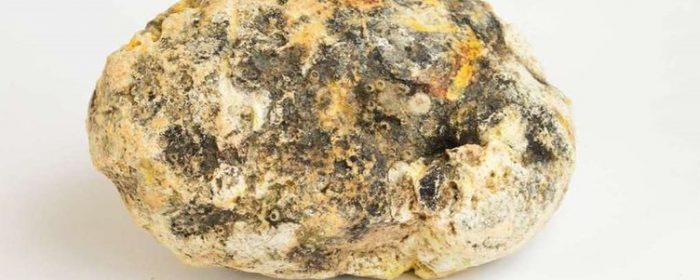
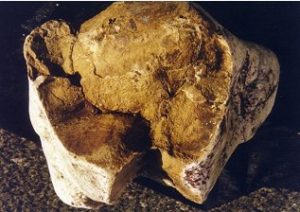
We’ve noticed so many people searching for Ambergris essential oil on our website and as no such thing exists (although there are very good extracts and synthetics) it occurred to us to explain exactly what it is and why it is now almost entirely a synthetically made material used in perfumery as a fixative ( a substance that makes the perfume long lasting and “fixes” it ) as, with the exception of a few countries, it is largely illegal to trade in natural Ambergris.
Firstly it is not a plant. It is a gastric bi product from the Sperm whale (an endangered and vulnerable species) which eats giant squid and as large numbers of squid beaks have been found in natural ambergris it has been suggested that the beaks irritate the Sperm whale’s stomach and are too sharp to pass easily through its digestive tract (as the beaks cannot be digested ) and the resultant production of ambergris lessens the irritation as it coats the beaks, making it easier in digestive transit. Larger ambergris deposits are suggested to be from whale vomit.
It takes years for ambergris used in perfume to form. The main odorous constituents in ambergris are ambrox and ambrinol.
Christopher Kemp, the author of Floating Gold: A Natural (and Unnatural) History of Ambergris, says, “It is only produced by sperm whales, and only by an estimated one percent of them. Once expelled by a whale, it must float for years, then it must make landfall, avoid being broken into pieces by rough seas, and someone must find it. In other words, the odds of finding ambergris are extremely small.”
When first expelled ambergris is soft, whitish (occasionally with black or dark brown streaks in it) and smells strongly of faecal matter. It takes months and even years of photo degradation and oxidation in the seas for it to harden and darken, its eventual colour being dark grey or even black. Its texture is still waxy but also crusty at this stage and its smell has altered to an animalistic, sweet and earthy fragrance which is then processed to be used as a highly prized fixative in the perfume industry – or rather was in the past. Whilst there are still a few perfumes that exist using ambergris that is found either floating at sea or washed up on various beaches, since 1986 when the majority of nations banned whale hunting, the product has been also banned as exploitation of whale species by all but a few countries such as France and Switzerland.
The product has been valued for millennia. The Ancient Egyptians used to burn it as an incense and modern Egyptians still use it for scenting cigarettes. In medieval Europe it was considered to be an effective protection against the Black Death and for those that could afford it, it was carried around as a small ball, like a pomander. In those days disease was thought to be in the air as a miasma and the smell of ambergris was so strong that it effectively masked the smell of anything else in the vicinity. It was also more commonly used by apothecaries to combat epilepsy, head pains and even colds.
It has been used as a flavouring in food and been thought to be an aphrodisiac. The Chinese call it Dragon’s spittle fragrance.
So because of its rarity, its unlikely discovery in the seas of our world, the vulnerability of the species that produces it and our quite natural reluctance to return to the days of indiscriminate slaughter of the rich number of animal species so abundant but continuously threatened by mankind – we now, quite rightly, use a synthetically produced version of ambergris.
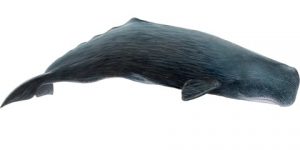
5 Day Total Detox Herbal Infusion Blend is a recipe for a warming and restorative infusion. This sweet herbal tea will help detoxify an overindulged system and restore balance and harmony. Especially good for those who tend to burn the candle at both ends; over indulge in food and liquor occasionally and have tended to neglect their general diet and life cycle for a while.
Drink 5 Day Total Detox Herbal Infusion Blend 3 times a day for 5 days.
We Recommend 1 strong cup at breakfast, 1 at lunch and 1 strong cup after dinner.
This particular blend contains a lot of ingredients and as such is probably best made in large batches for continued use with 5 days on, 10 days off and 5 days on again and so forth.
It has a longish shelf life so it is quite alright to keep the blend in an airtight container which has been sterilised and outside an environment with temperature differences. A kichen or bathroom is really not the ideal place to keep any such item simply because of the temperature and humidity variations. A cool larder is perfect.
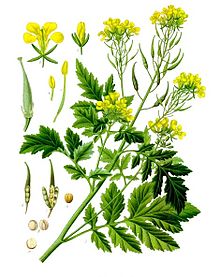
Ingredients for 5 Day Total Detox Herbal Infusion Blend:-
Burdock Leaves 25 grams
Dandelion Root 50 grams
Parsley Root 25 grams
Garden Sage 25 grams
Turmeric 10 grams
Kibbled Ginger 10 grams
Cloves 10 grams
Coriander Seed 25 grams
Cardamom 25 grams
Black Pepper 10 grams
Fennel 25 grams
Juniper 10 grams
Star Anise 10 grams
Liquorice 25 grams
Cinnamon 10 grams
Centaury 25 grams
Boldo 25 grams
Milkthistle Seed 50 grams
German Chamomile 50 grams
Peppermint 50 grams
Herbal teas are blends, inasmuch as they are produced using a variety of ingredients during the manufacturing process. For the most robust teas, a perfect blend must be achieved for premium quality. The tea, no matter the type, should taste full-bodied, never stale or thin.
Herbal tea blends are some of the most flavoursome teas in the world. The process of fermentation during the drying process is where the blending usually happens but that doesn’t preclude home blending from dried materials. Spices, fruits, herbs, and other natural ingredients are brought together in this process to create unique and dynamic flavours, simple or refined.
Mix the ingredients thoroughly and its our suggestion that you wait for about 10 days before brewing a pot or two, agitating the mix occasionally during that 10 day period to ensure all the flavours blend well and thoroughly.
When ready, this mix will make around 70 cups or good sized mugs, use a heaped teaspoon of the blend per person or serving and use a cafatierre if you don’t have a straining teapot. Pour freshly boiled water over the blend – wait until the water has stopped bubbling before you pour it which will signify its just off the boil otherwise you will scald the herbs. Always use fresh water rather than water you have previously boiled and left in the kettle. You want the water to have as much oxygen in it as possible.
Let the blend brew for around 5 minutes and then drink.
 CO2 Extraction (sometimes called Hypercritical or Supercritical carbon dioxide extraction) is a relatively new process used to extract the very purest essence of a plant. Whilst essential oils from plants are usually extracted using heat distillation which is, in itself, a destructive process, CO2 Extraction uses only low or high pressure which means the complexities of the oil’s constituents are preserved.
CO2 Extraction (sometimes called Hypercritical or Supercritical carbon dioxide extraction) is a relatively new process used to extract the very purest essence of a plant. Whilst essential oils from plants are usually extracted using heat distillation which is, in itself, a destructive process, CO2 Extraction uses only low or high pressure which means the complexities of the oil’s constituents are preserved.
When high pressure is applied to CO2 (carbon dioxide) the gas acts like a liquid. This liquid CO2 can be used as a quite inert and very safe solvent which, when pumped into a chamber containing plant material will act like a solvent attracting the plant’s volatile elements into it.
Essential oils can be extracted in this way and have the added benefit of avoiding the high temperatures of steam distillation which, in itself, can destroy some volatile compounds, especially those of an extreme delicate nature. Not all CO2 extracts are essential oils however as that term typically refers to steam distillation.
Many CO2 extractions, whilst more efficient perhaps, result in an extraction not dissimilar to the steam distilled oil but some are much more complex and rounded and, of course, the offerings can be very much more varied. Plants whose scent would easily be destroyed by the heat in the steam distillation process might more easily be captured by the Supercritical CO2 extraction process.
Essential Oils or CO2 Selects:
These “Selects” are obtained at relatively low CO2 pressure and contain only volatile, CO2 soluble components. These tend to resemble the classic steam distillate essential oils but with the advantage of no temperature degradation and the potential for additional volatile substances that may not be distilled out of the plant under normal steam distillation. The consistency of the essential oils extracted with the CO2 method will vary from batch to batch just as the plants themselves vary and just as steam distilled oils vary. Naturally, there is also the extraction process itself and the actual processor to consider.
Extracts Called “Totals:”
These “Totals” are obtained at higher CO2 pressures and contain all CO2 soluble components, including waxes, resins, colorants, resembling a classical hexane extract, with the advantage of no solvent residue. Therefore the resultant oils are like absolute oils.
These “Totals” are very very much like the herb itself. CO2 totals are usually thick and pasty due to the beneficial fats, resins, and waxes they contain that come from the plant material itself. These totals are soluble in essential oils and vegetate oils but seldom in water and are considered Absolute Oils.
Save
I have been in recent conversations with people concerning endangered plant species that are on the CITES register and am surprised at just how little knowledge and information people who express concern about such things have to hand yet are ready to express an opinion which is based on so little knowledge or expertise in the matter.
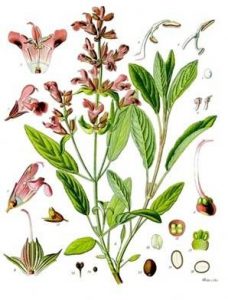
For instance, in a recent conversation, a blogger took me to task over Rosewood or Bois de Rose essential oil saying that it shouldn’t be used as it is endangered.
That is quite true in that South American Wild Rain Forest Rosewood is endangered ( Aniba roseodora not the many species of Dalbergia which are also called Rosewoods and are even more endangered)
The operative word is wild.
Native populations know the value of Rosewood and will, because they live, in much of the case, in abject poverty, cut down a wild tree and sell it for the best price they can get. Some would argue that they shouldn’t be blamed. Why would they not try to improve the lives of their family by making a quick and easy buck? Why shouldn’t they try to lift themselves out of poverty? Why would they care for the planet’s biodiversity?
It is poaching. They don’t own the land on which the tree grows and they didn’t plant any of the trees which may have been there for many years or even nurture them in their growth. Poaching is what is responsible for the endangered status of the tree along with over harvesting from the wild.
On the other hand, the Brazilian Government, using the much vaunted Australian principle demonstrated with Sandalwaood ( Santalum album) in India has devoted a large fund to taking periphery neglected already denuded rain forest land and planting Rosewood trees in plantations in order to manage and protect the species, taking some of the saplings back into the wild to colonise the rainforest.
The produce from the plantations is much cheaper than one could expect to pay a poacher ( because of the subsidies) and can only be bought legally at Government auction. The demand, therefore, which is human originated is satiated to some extent, by the managed plantation stock, the excess going back into the wild. It isn’t perfect.
Other nations are stepping in. As with Sandalwood, Other nations are now experimenting with the planting of non native species to see if they will happily grow and thrive without changing the domestic biodiversity. Its a tricky business because theory doesn’t always have a positive effect when put into practice. Sandalwood is now grown in East Africa and Papua as alternative pastures for the tree. Similarly India is planting Aniba roseodora. It will be years before we know if the outcome will be positive or negative and its an admitted risk. Such intervention in nature can have negative impact it has to be admitted but it doesn’t always have to. It isn’t a given outcome.
Isn’t that a good idea though? Isn’t that a way that human intervention which caused the problem in the first instance, can have a positive effect?
It won’t stop poaching. It won’t stop the illegal trading in poached Rosewood. It wont stop those that don’t care, or consider themselves too poor to care, from poaching.
It WILL stop the eventual extinction of the species. We can’t change human nature overnight – it takes years of education and poverty elimination to reduce criminal or illegal, at best, activities with endangered species but those who do care can slow the process down or reverse it with their intervention. An outright ban on all Rosewood products will just increase demand that will be met by more illegal practice if there is no positively inspired intervention.
Who pays for the subsidies and Government funding? The taxpayer or the purchasers of legally obtained Rosewood products? It should be the latter.
The English Bluebell, as another instance, is a protected species and easily hybridises with the Spanish Bluebell which has no scent and will colonise an English Bluebell wood in a matter of years. What does the Government directly do about it – very little but 70% of the World’s stock of the English Bluebell resides in the UK. English Heritage is encouraging people to dig up their Spanish Bluebells in their gardens and discard them and are GIVING away English Bluebell bulbs to replace them to try and stop the hybridisation. Isn’t that a positive idea?
The Red Squirrel has virtually been wiped out by the introduction of the American Grey Squirrel to the UK more than 100 years ago. The Red Squirrel has small colonies in Scotland and remote British Islands. Recent research has shown that the introduction of Pine Martens predate on Grey Squirrel populations and not on Red Squirrel populations so they are beginning to thrive again in areas where the Pine Marten has been re-introduced and where the Red Squirrel has been previously wiped out. Many people consider that a good thing but we don’t yet know what effect the re-introduction of Pine Martens will have on other local wild life. But isn’t it better to try?
Save
























